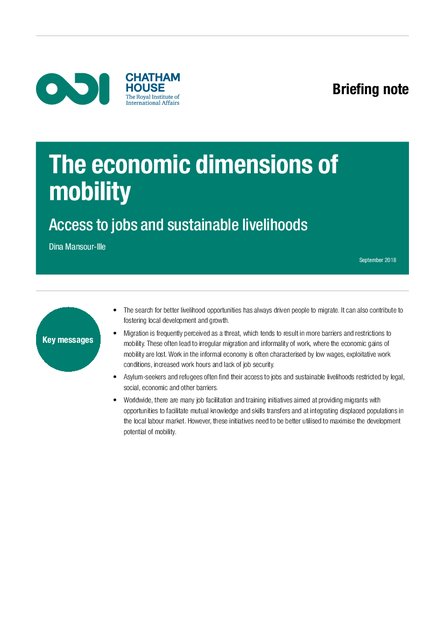
In 2017, the number of international migrants reached 258 million, while the total number of refugees and asylum-seekers in the world reached 25.9 million. The economic dimensions of mobility, in terms of access to jobs and sustainable livelihoods, are central to the integration process of these groups, yet they often face structural, legal and other barriers. This rapid scoping review aims to explain these barriers, and present case studies of where the barriers have been successfully overcome.
Key messages:
- The search for better livelihood opportunities has always driven people to migrate. It can also contribute to fostering local development and growth.
- Migration is frequently perceived as a threat, which tends to result in more barriers and restrictions to mobility. These often lead to irregular migration and informality of work, where the economic gains of mobility are lost. Work in the informal economy is often characterised by low wages, exploitative work conditions, increased work hours and lack of job security.
- Asylum-seekers and refugees often find their access to jobs and sustainable livelihoods restricted by legal, social, economic and other barriers.
- Worldwide, there are many job facilitation and training initiatives aimed at providing migrants with opportunities to facilitate mutual knowledge and skills transfers and at integrating displaced populations in the local labour market. However, these initiatives need to be better utilised to maximise the development potential of mobility.